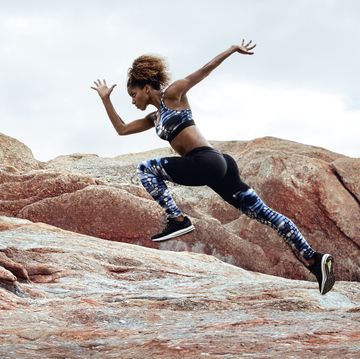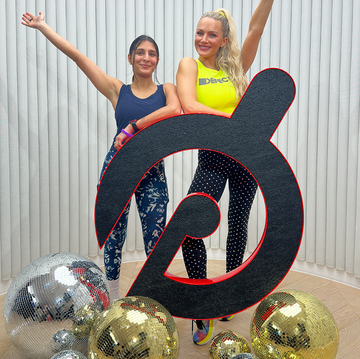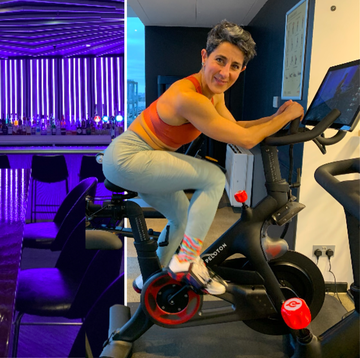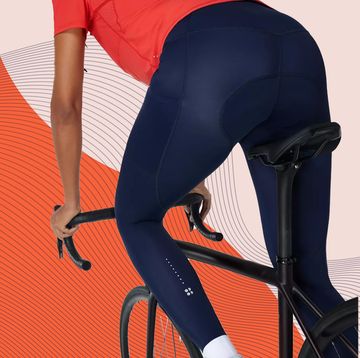Ever wondered what the best cardio workouts actually are?
WH are putting the two popular commute cardio options head to head.
Although there are many different forms of cardio, the two most popular are cycling and running—in part due to how easy they both are. Running only requires a good pair of trainers (like these running shoes for women) and cycling a trusty old bike.
The age-old debate is usually pretty divided between devoted fans of either sport—but which actually makes for a better workout?
WH examined the research and spoke to the experts to decipher whether the best cardio workouts include two wheels or two feet.
Keep scrolling to find out.
The best cardio workouts: Running vs cycling
The stats
17 million runs were completed on fitness app Strava in the UK last year as opposed to 27 million rides. A casual 10 million rides difference. Interesting.
The science
Research from the University of Birmingham found that when completed at the same level of perceived effort, you'll shift slightly more belly fat pounding the pavement than you will in the saddle.
On the other hand, if you're a fan of the squat rack, cycling may be one of the best cardio workouts for you. A study from Stephen F Austin State University found that you’ll preserve more muscle mass by combining weight training with cycling than you will with running.
The positives
Running can benefit your mind as well as your body. Research from the University of Arizona found that it can help you link different parts into your daily routine and costs six times less than of your brain, which boosts planning and decision-making skills and the ability to multitask.
But as the commuter’s best friend, cycling is easy to incorporate into your daily routine and costs six times less than travelling by car. The low-impact nature of pedalling also means it’s easier on the joints than running.
The negatives
The most common cause of shin splints? Yep, running. Step out in the wrong trainers for your gait and you can damage your knees, hips and ankles even more than you can by wearing high heels. Get it checked before training.
But cyclists, position your handlebars incorrectly and you can damage your genital tissue. For female cyclists, having lower handlebars increases pressure down there, which reduces sensitivity long term. And no one wants that.
The nutrition
Runners listen up. According to Indiana University, taking a daily dose of Lyprinol, a marine oil made from green-lipped mussels, can help aid post-running muscle recovery and reduce soreness.
Similarly, stats from the University of Exeter found that downing a shot of beetroot juice a few hours before cycling and the nitrates will help you shave 2% off your PB and increase your endurance by 16%.
The expert verdict
‘As well as being accessible, not to mention free, running helps to increase bone density, protecting you from osteoporosis further down the track, says Leo Savage, a personal trainer at Third Space.
But cycling lowers the dreaded DOMS, according to Melissa Power, personal trainer at n4workout. She adds: ‘The saddle wins for muscle, as power comes through the quads, glutes and hamstrings. Plus, DOMS will be less intense the next day.'
The winner? Cycling
Pavement purists may point to running’s superior fat-burning credentials, but cycling’s muscle-saving – and endurance-building – benefits bag it the yellow jersey. Plus, when you can kill two birds by getting your cardio on your commute – because, in all likelihood, you can cycle further than you can run – early morning treadmill sessions can jog on.













